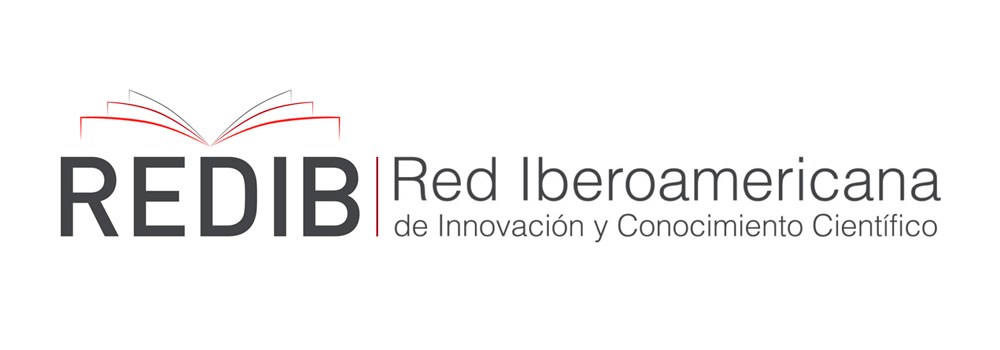B-learning en la enseñanza del idioma inglés en el nivel superior: una revisión sistemática
DOI:
https://doi.org/10.35622/j.rie.2022.02.006Palabras clave:
Blended learning, educación universitaria, enseñanza de inglés, tecnología educativaResumen
El b-learning es ampliamente considerado como un enfoque que combina los beneficios que brindan los componentes de aprendizaje presencial y en línea. Sin embargo, la combinación de componentes instructivos en línea con presenciales que plantea este enfoque, ha generado inquietudes a lo largo de los años. La siguiente revisión sistemática tiene como objetivo evidenciar cómo influye el b-learning en la enseñanza del idioma inglés en estudiantes universitarios a través del análisis de experiencias y percepciones. Se ha considerado el uso de la metodología Prisma para los fines de la investigación. Para esta revisión se utilizaron las siguientes bases de datos: Scopus, Scielo, Science direct y Redalyc, encontrándose 260 artículos y seleccionando 16 artículos para realizar una revisión a profundidad. Los resultados demuestran que la mayoría de experiencias con el blended learning fueron beneficiosas en el campo de la enseñanza de inglés. Además, las percepciones docentes y estudiantiles son positivas y determinantes para el uso futuro de las tecnologías digitales. Esta revisión destaca la necesidad de realizar investigaciones que propongan soluciones al abordaje de los desafíos de estudiantes, profesores e instituciones educativas en el aprendizaje mixto, así como la determinación de características del modelo para una accesible puesta en práctica en las aulas.
Referencias
Bartolomé, A., García, R., & Aguaded, I. (2017). Blended learning: panorama y perspectivas. RIED. Revista Iberoamericana de Educación a Distancia, 21(1), 33. https://doi.org/10.5944/ried.21.1.18842 DOI: https://doi.org/10.5944/ried.21.1.18842
Bearman, M., Smith, C., Carbone, A., Slade, S., Baik, C., Hughes, M., & Neumann, D. (2012). Systematic review methodology in higher education. Higher Education Research & Development, 31(5), 625-640. https://doi.org/10.1080/07294360.2012.702735 DOI: https://doi.org/10.1080/07294360.2012.702735
Boelens, R., De Wever, B., & Voet, M. (2017). Four key challenges to the design of blended learning: A systematic literature review. Educational Research Review, 22, 1-18. https://doi.org/10.1016/j.edurev.2017.06.001 DOI: https://doi.org/10.1016/j.edurev.2017.06.001
Bonk, C., & Graham, C. (2012). The handbook of blended learning: global perspectives, local designs - Curtis J. Bonk, Charles R. Graham - Google libros. Pfeiffer Publishing.
Chaves, A. (2018). La utilización de una metodología mixta. En Rompiendo Barreras en la Investigación (1ra ed., pp. 164-182). UTMACH.
Du, X. (2013). English grammar automatic output model under non-native environment. Theory and Practice in Language Studies, 3(1), 29-34. https://doi.org/10.4304/tpls.3.1.29-34 DOI: https://doi.org/10.4304/tpls.3.1.29-34
Dziuban, C., Graham, C., Moskal, P., Norberg, A., & Sicilia, N. (2018). Blended learning: the new normal and emerging technologies. International Journal of Educational Technology in Higher Education, 15(1), 3. https://doi.org/10.1186/s41239-017-0087-5 DOI: https://doi.org/10.1186/s41239-017-0087-5
Esparaza, M., Salinas, V., & Glasserman, L. (2015). La gestión del aprendizaje en la modalidad b-learning frente a la modalidad presencial en la enseñanza de la gramática inglesa B-learning modality vs. face to face modality learning management in english grammar teaching. Revista Apertura, 7(2), 1-10. http://www.udgvirtual.udg.mx/apertura/index.php/apertura/article/view/682/479
Ferriman, N. (2013). The impact of blended e-learning on undergraduate academic essay writing in English (L2). Computers & Education, 60(1), 243-253. https://doi.org/10.1016/j.compedu.2012.07.008 DOI: https://doi.org/10.1016/j.compedu.2012.07.008
Halverson, L., Graham, C., Spring, K., Drysdale, J., & Henrie, C. (2014). A thematic analysis of the most highly cited scholarship in the first decade of blended learning research. The Internet and Higher Education, 20, 20-34. https://doi.org/10.1016/j.iheduc.2013.09.004 DOI: https://doi.org/10.1016/j.iheduc.2013.09.004
Hockly, N. (2018). Blended learning. ELT Journal, 72(1), 97-101. https://doi.org/10.1093/elt/ccx058 DOI: https://doi.org/10.1093/elt/ccx058
Hrastinski, S. (2019). What do we mean by blended learning? TechTrends, 63(5), 564-569. https://doi.org/10.1007/s11528-019-00375-5 DOI: https://doi.org/10.1007/s11528-019-00375-5
Hubackova, S. (2015). Blended learning – new stage in the foreign language teaching. Procedia - Social and Behavioral Sciences, 197, 1957-1961. https://doi.org/10.1016/j.sbspro.2015.07.582 DOI: https://doi.org/10.1016/j.sbspro.2015.07.582
Islas, C. (2014). El b-learning: un acercamiento al estado del conocimiento en Iberoamérica 2003-2013. Apertura, 6(1), 86-97. http://www.udgvirtual.udg.mx/apertura/index.php/apertura/article/view/500
Jia, J., Chen, Y., Ding, Z., & Ruan, M. (2012). Effects of a vocabulary acquisition and assessment system on students’ performance in a blended learning class for English subject. Computers & Education, 58(1), 63-76. https://doi.org/10.1016/j.compedu.2011.08.002 DOI: https://doi.org/10.1016/j.compedu.2011.08.002
Koſar, G. (2016). A study of EFL instructors⿿ perceptions of blended learning. Procedia - Social and Behavioral Sciences, 232, 736-744. https://doi.org/10.1016/j.sbspro.2016.10.100 DOI: https://doi.org/10.1016/j.sbspro.2016.10.100
Levano, L., Sanchez, S., Guillén, P., Tello, S., Herrera, N., & Collantes, Z. (2019). Competencias digitales y educación. Revista de psicología educativa, 7(2). http://revistas.usil.edu.pe/index.php/pyr/article/view/329 DOI: https://doi.org/10.20511/pyr2019.v7n2.329
Lungu, I. (2013). The increasing need for blended-learning models in courses of english for specific courses in Romanian Universities. Procedia - Social and Behavioral Sciences, 76, 470-475. https://doi.org/10.1016/j.sbspro.2013.04.148 DOI: https://doi.org/10.1016/j.sbspro.2013.04.148
Macedo, A., & Finardi, K. (2020). Integrating digital technologies in Brazilian English language teacher education through blended learning. Educação em Revista, 36, 233799. https://doi.org/10.1590/0102-4698233799 DOI: https://doi.org/10.1590/0102-4698233799
Martin, F., Ahlgrim, L., & Budhrani, K. (2017). Systematic Review of Two Decades (1995 to 2014) of Research on Synchronous Online Learning. American Journal of Distance Education, 31(1), 3-19. https://doi.org/10.1080/08923647.2017.1264807 DOI: https://doi.org/10.1080/08923647.2017.1264807
Maulan, S., & Ibrahim, R. (2012). The teaching and learning of english for academic purposes in blended environment. Procedia - Social and Behavioral Sciences, 67, 561-570. https://doi.org/10.1016/j.sbspro.2012.11.361 DOI: https://doi.org/10.1016/j.sbspro.2012.11.361
Mohammadi, E., & Mirdehghan, S. (2014). A CMC Approach to teaching phrasal-verbs to Iranian EFL senior high school students: the case of blended learning. Procedia - Social and Behavioral Sciences, 98, 1174-1178. https://doi.org/10.1016/j.sbspro.2014.03.531 DOI: https://doi.org/10.1016/j.sbspro.2014.03.531
Money, J., Dinning, T., Nixon, S., Walsh, B., & Magill, C. (2016). Co-creating a blended learning curriculum in transition to higher education: a student viewpoint. Creative Education, 07(09), 1205-1213. https://doi.org/10.4236/ce.2016.79126 DOI: https://doi.org/10.4236/ce.2016.79126
Morales, S., & Ferreira, A. (2008). La efectividad de un modelo de aprendizaje combinado para la Enseñanza del inglés como lengua extranjera. RLA. Revista de lingüística teórica y aplicada, 46(2), 95-118. https://doi.org/10.4067/S0718-48832008000200006 DOI: https://doi.org/10.4067/S0718-48832008000200006
Pham, H., & Ho, T. (2020). Toward a ‘new normal’ with e-learning in Vietnamese higher education during the post COVID-19 pandemic. Higher Education Research and Development, 39(7), 1327-1331. https://doi.org/10.1080/07294360.2020.1823945 DOI: https://doi.org/10.1080/07294360.2020.1823945
Pinto, A., Sánchez, M., García, F., & Casillas, S. (2017). Students’ perceptions and attitudes towards asynchronous technological tools in blended-learning training to improve grammatical competence in English as a second language. Computers in Human Behavior, 72, 632-643. https://doi.org/10.1016/j.chb.2016.05.071 DOI: https://doi.org/10.1016/j.chb.2016.05.071
Rico, J., Ramírez, M., & Montiel, S. (2016). Development of oral competence through the use of Open Educational Resources. Apertura. https://www.redalyc.org/journal/688/68845366006/
Ruiz, F., & Belmonte, A. (2014). Young people as users of branded applications on mobile devices. Comunicar, 22(43), 73-81. https://doi.org/10.3916/C43-2014-07 DOI: https://doi.org/10.3916/C43-2014-07
Saboowala, R., & Manghirmalani, P. (2018). Student teachers’ attitudes towards blended learning. Journal of Education and Human Development, 7(2). https://doi.org/10.15640/jehd.v7n2a2 DOI: https://doi.org/10.15640/jehd.v7n2a2
Saborío, S. (2019). Curricular proposal on a blended approach and an informative multimedia for didactic resources for the teaching of English course. Revista Electronica Educare, 23(3). https://doi.org/10.15359/ree.23-3.11 DOI: https://doi.org/10.15359/ree.23-3.11
Salinas, J., Gisbert, M., De Benito, B., & Pérez, A. (2017). Blended learning, más allá de la clase presencial. RIED. Revista Iberoamericana de Educación a Distancia, 21(1), 195. https://doi.org/10.5944/ried.21.1.18859 DOI: https://doi.org/10.5944/ried.21.1.18859
Tosun, S. (2015). The effects of blended learning on EFL students’ vocabulary enhancement. Procedia - Social and Behavioral Sciences, 199, 641-647. https://doi.org/10.1016/j.sbspro.2015.07.592 DOI: https://doi.org/10.1016/j.sbspro.2015.07.592
Tuncay, N., & Uzunboylu, H. (2012). English language teachers’ success in blended and online e-learning. Procedia - Social and Behavioral Sciences, 47, 131-137. https://doi.org/10.1016/j.sbspro.2012.06.626 DOI: https://doi.org/10.1016/j.sbspro.2012.06.626
Turpo, O. (2015). Perspectiva de la convergencia pedagógica y tecnológica en la modalidad blended learning Perspective of Pedagogical and Technological Convergence in Blended Learning. Revista de Educación a Distancia (RED), 39, 1-14. https://revistas.um.es/red/article/view/234261
Villalonga, C., Díez, R., & Alemán, I. (2018). Aprendizaje en red. En Calidad informativa en la era de la digitalización: fundamentos profesionales vs. infopolución (pp. 131-142). Dykinson. https://doi.org/10.2307/j.ctv9zchsb.11 DOI: https://doi.org/10.2307/j.ctv9zchsb.11
Woodfield, W., Graham, C., Bodily, R., & Sandberg, D. (2016). A qualitative analysis of institutional drivers and barriers to blended learning adoption in higher education. Internet and Higher Education, 28, 17-27. https://doi.org/10.1016/j.iheduc.2015.08.003 DOI: https://doi.org/10.1016/j.iheduc.2015.08.003
Yang, Y., & Kuo, N. (2021). Blended learning to foster EFL college students’ global literacy. Computer Assisted Language Learning. https://doi.org/10.1080/09588221.2021.1900874 DOI: https://doi.org/10.1080/09588221.2021.1900874
Yang, Ya, Chuang, Y., Li, L., & Tseng, S. (2013). A blended learning environment for individualized English listening and speaking integrating critical thinking. Computers & Education, 63, 285-305. https://doi.org/10.1016/j.compedu.2012.12.012 DOI: https://doi.org/10.1016/j.compedu.2012.12.012
Publicado
Número
Sección
Licencia
Derechos de autor 2021 Stefany Noa, Kevin Laura, Lesly Apayco, Zoraida Ramos, Yolanda Lujano

Esta obra está bajo una licencia internacional Creative Commons Atribución 4.0.



























